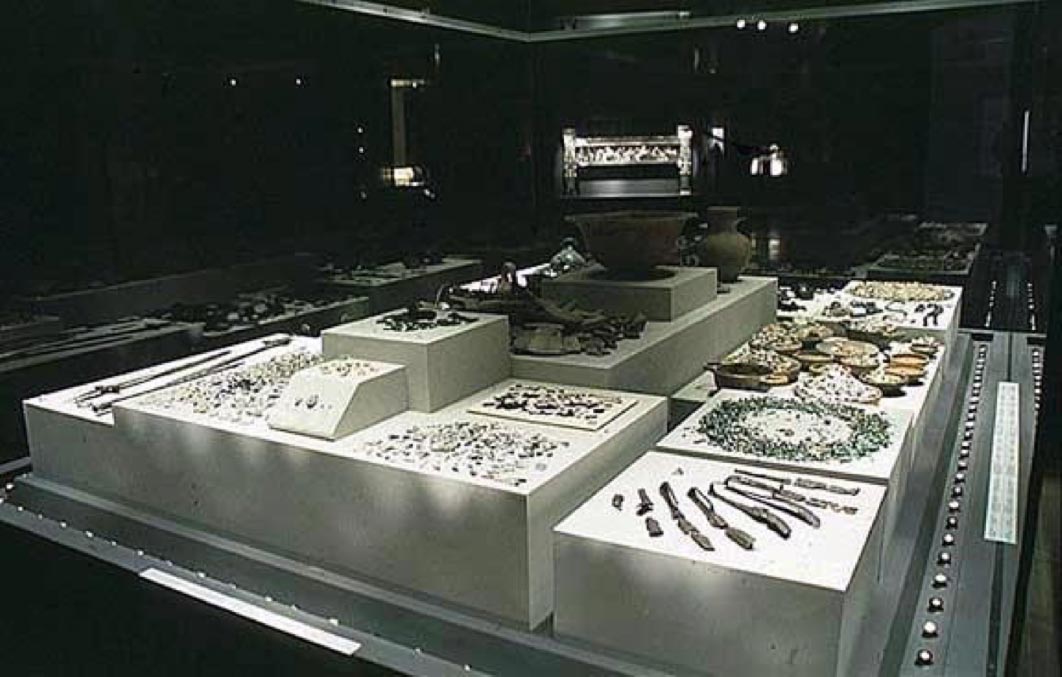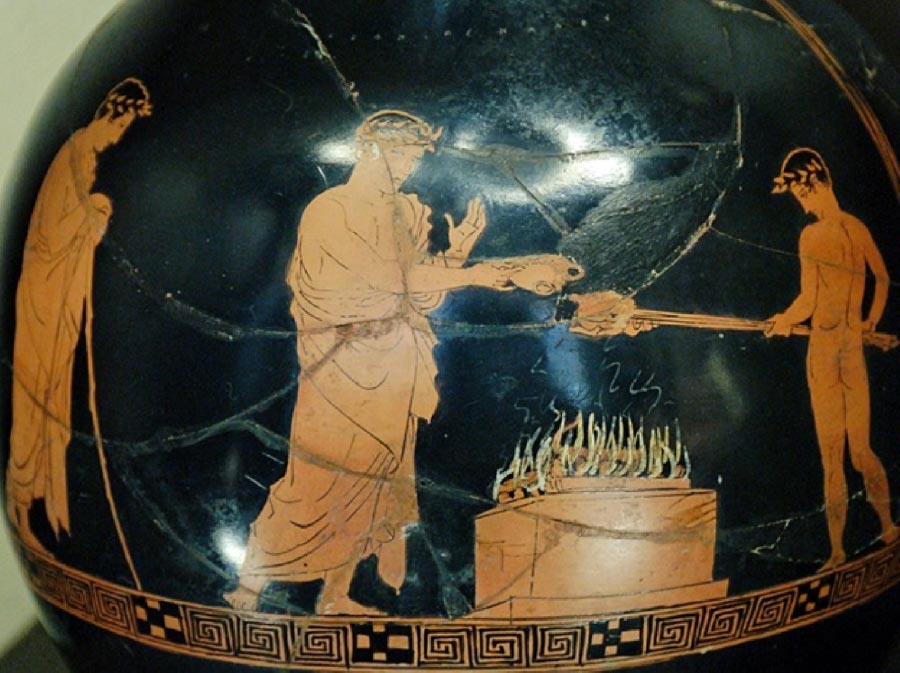
Orphic Masks and Burial Rituals: Unmasking King Philip II of Macedon
That is the gods’ work, spinning threads of death
through the lives of mortal men,
and all to make a song for those to come. Homer
The ancient Greek world was steeped in superstition and deisidaimonia, a ‘sanctimonious piety’. Not only did the gods above need pacifying, but also the daimons below. Thunder was Zeus’ anger, sea storms Poseidon’s wrath, and the dark mood of Demeter was responsible for crop failure and famine, if not a pestilence spread by Apollo.

Wall painting in the royal tomb at Vergina, Macedonia ( CC BY-SA 2.0)
When looking to the sky, comets were considered celestial portents, while eclipses were harbingers of death. Man could do no more in the face of such threats than beseech divine favor, so animals were sacrificed before battle and libations poured into the earth to ensure good fortune at any and every significant event.

Animal sacrifice with libations; depiction ca. 430-425 BC. Louvre. (Public Domain)
But the dialogue with lofty Olympian deities and chthonic gods beneath often went deeper and darker than that, with the more ancient of the mysticisms rooted in atonement, the expulsion of curses, and purification rituals in which tombs and mausoleums played an integral part. Ghosts frequented the subterranean burial chambers where the deceased commenced their journey to the realm of Hades, and they were not to be intruded upon without consequences.




